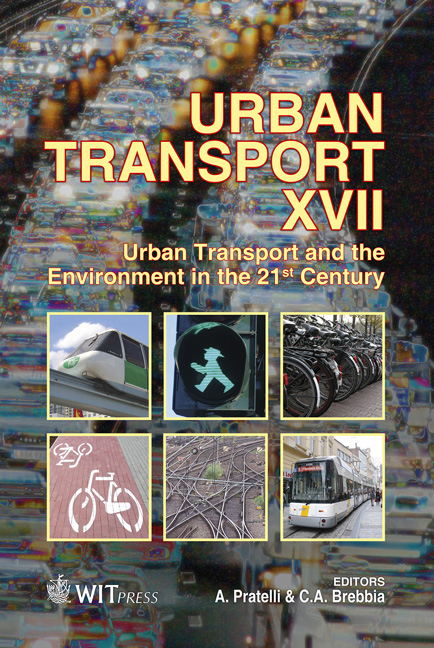Real-time Evaluation Of Driver’s Alertness On Highways
Price
Free (open access)
Transaction
Volume
116
Pages
11
Page Range
553 - 564
Published
2011
Size
1,113 kb
Paper DOI
10.2495/UT110471
Copyright
WIT Press
Author(s)
G. S. Larue, A. Rakotonirainy & A. N. Pettitt
Abstract
Suburbanisation has been internationally a major phenomenon in the last decades. Suburb-to-suburb routes are nowadays the most widespread road journeys; and this resulted in an increment of distances travelled, particularly on faster suburban highways. The design of highways tends to over-simplify the driving task and this can result in decreased alertness. Driving behaviour is consequently impaired and drivers are then more likely to be involved in road crashes. This is particularly dangerous on highways where the speed limit is high. While effective countermeasures to this decrement in alertness do not currently exist, the development of in-vehicle sensors opens avenues for monitoring driving behaviour in real-time. The aim of this study is to evaluate in real-time the level of alertness of the driver through surrogate measures that can be collected from in-vehicle sensors. Slow EEG activity is used as a reference to evaluate driver’s alertness. Data are collected in a driving simulator instrumented with an eye tracking system, a heart rate monitor and an electrodermal activity device (N = 25 participants). Four different types of highways (driving scenario of 40 minutes each) are implemented through the variation of the road design (amount of curves and hills) and the roadside environment (amount of buildings and traffic). We show with Neural Networks that reduced alertness can be detected in real-time with an accuracy of 92% using lane positioning, steering wheel movement, head rotation, blink frequency, heart rate variability and skin conductance level. Such results show that it is possible to assess driver’s alertness with surrogate measures. Such methodology could be used to warn drivers of their alertness level through the development of an in-vehicle device monitoring in real-time drivers’ behaviour on highways, and therefore it could result in improved road safety.
Keywords
driving impairment, alertness, neural Networks, simulated driving, real-time assessment





